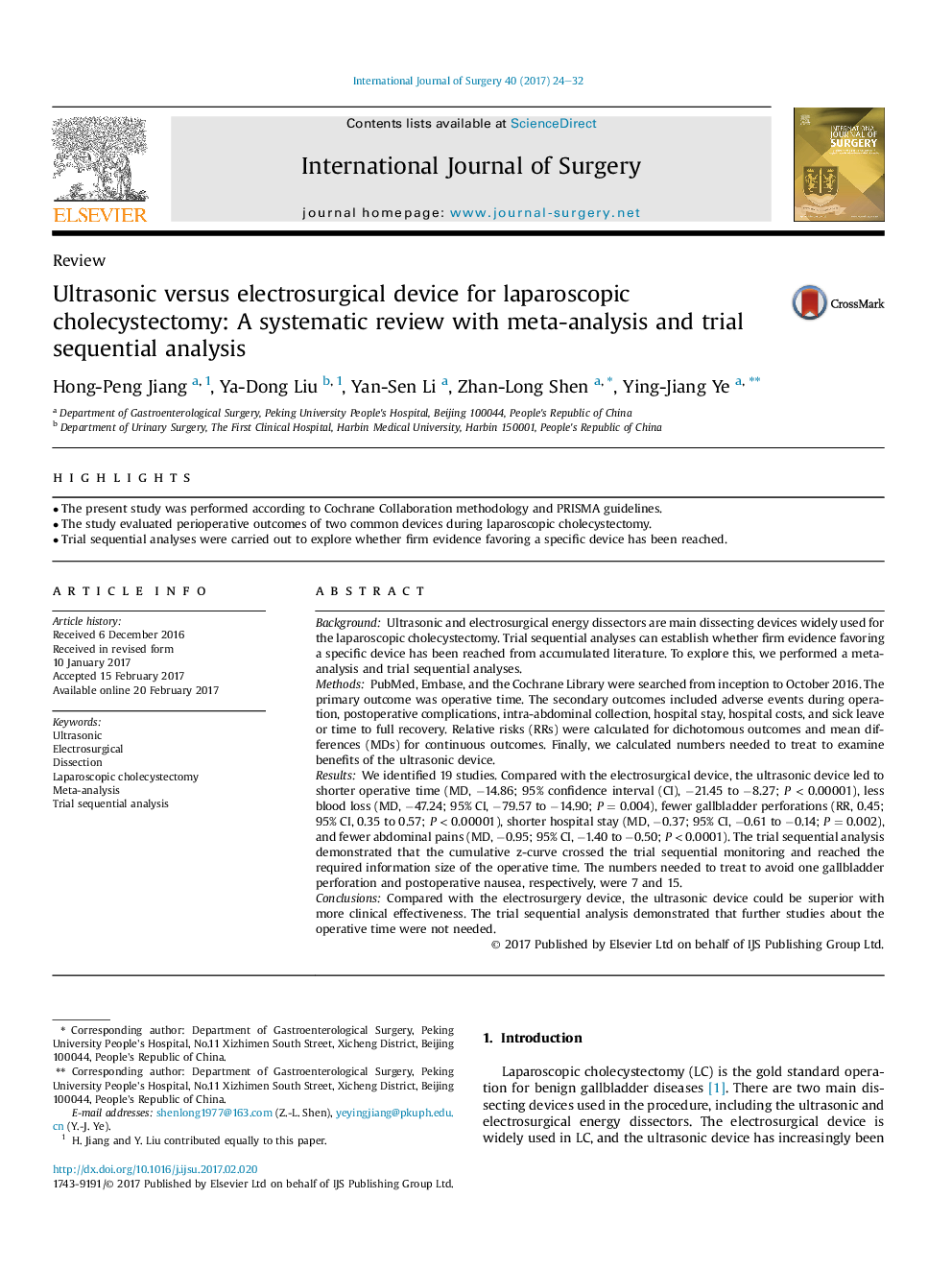| کد مقاله | کد نشریه | سال انتشار | مقاله انگلیسی | نسخه تمام متن |
|---|---|---|---|---|
| 5732264 | 1611939 | 2017 | 9 صفحه PDF | دانلود رایگان |
- The present study was performed according to Cochrane Collaboration methodology and PRISMA guidelines.
- The study evaluated perioperative outcomes of two common devices during laparoscopic cholecystectomy.
- Trial sequential analyses were carried out to explore whether firm evidence favoring a specific device has been reached.
BackgroundUltrasonic and electrosurgical energy dissectors are main dissecting devices widely used for the laparoscopic cholecystectomy. Trial sequential analyses can establish whether firm evidence favoring a specific device has been reached from accumulated literature. To explore this, we performed a meta-analysis and trial sequential analyses.MethodsPubMed, Embase, and the Cochrane Library were searched from inception to October 2016. The primary outcome was operative time. The secondary outcomes included adverse events during operation, postoperative complications, intra-abdominal collection, hospital stay, hospital costs, and sick leave or time to full recovery. Relative risks (RRs) were calculated for dichotomous outcomes and mean differences (MDs) for continuous outcomes. Finally, we calculated numbers needed to treat to examine benefits of the ultrasonic device.ResultsWe identified 19 studies. Compared with the electrosurgical device, the ultrasonic device led to shorter operative time (MD, â14.86; 95% confidence interval (CI), â21.45 to â8.27; P < 0.00001), less blood loss (MD, â47.24; 95% CI, â79.57 to â14.90; P = 0.004), fewer gallbladder perforations (RR, 0.45; 95% CI, 0.35 to 0.57; P < 0.00001), shorter hospital stay (MD, â0.37; 95% CI, â0.61 to â0.14; P = 0.002), and fewer abdominal pains (MD, â0.95; 95% CI, â1.40 to â0.50; P < 0.0001). The trial sequential analysis demonstrated that the cumulative z-curve crossed the trial sequential monitoring and reached the required information size of the operative time. The numbers needed to treat to avoid one gallbladder perforation and postoperative nausea, respectively, were 7 and 15.ConclusionsCompared with the electrosurgery device, the ultrasonic device could be superior with more clinical effectiveness. The trial sequential analysis demonstrated that further studies about the operative time were not needed.
Journal: International Journal of Surgery - Volume 40, April 2017, Pages 24-32
